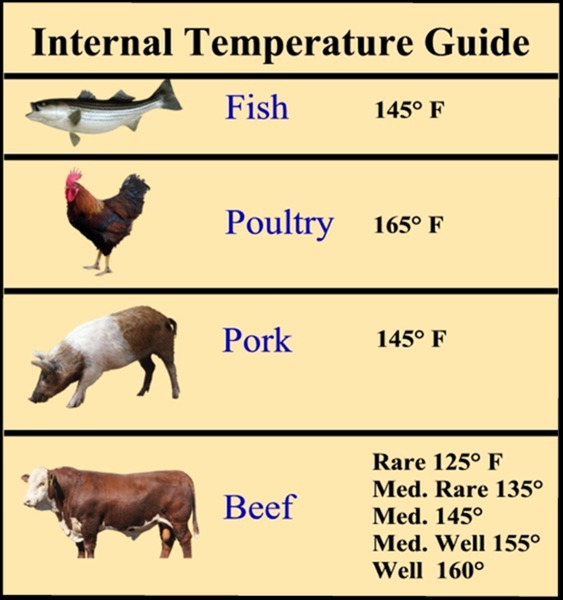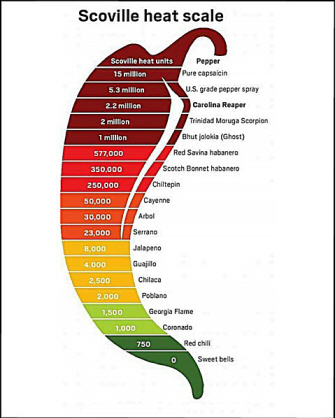Leftovers
Home -
Recipes - Butcher
Charts -The Wood - Que
Tips - BBQ Lingo
Smokers -
Que Gear - Pitmasters - BBQ Nation
-
Leftovers -
About Us

Leftovers
is a place for everything that's, well, leftover.
Kind of a potpourri of important odds and ends that don't
fit anywhere else.
How To Build A Quick And Simple Concrete
Block BBQ Pit
New Guidelines For Meat Done
Temperatures
On
May 24th., 2011, the USDA lowered the recommended safe cooking
temperature for whole cuts of pork from 160 ºF to 145 ºF with
the addition of a three-minute rest time. The new cooking
guidelines comes after a Pork Check Off research project
performed by an independent research firm, shows that pork can
be consumed safely when cooked to an internal temperature of
145 degrees Fahrenheit, followed by a three-minute rest time.
The new recommended temperature is a significant 15 degrees
less than what was previously recommended and typically will
yield a finished product that is pinker in color than most
home cooks are accustomed to and may be a little hard to take
at first, or second. This new temperature does, however, help
a great deal with keeping pork moist, which can be difficult
with many cuts of pork. The revised recommendation applies to
pork whole-muscle cuts, such as loin, chops and roasts.
Ground pork, like all
ground meat, should be cooked to 160 degrees Fahrenheit.
For beef, veal, and
lamb cuts, the safe temperature remains unchanged at 145 ºF,
(Not sure, but I think it's illegal to cook a steak to 145
degrees in Texas) and the department has added a three-minute
rest time as part of its cooking recommendations with those as
well.
Poultry: The safe
cooking temperature for all poultry products, including ground
chicken and turkey, stays the same at 165 ºF.
Of course you should always follow all safety recommendations
regardless of topic, but remember, these are the "Safe Done
Temperature" recommendations, not necessarily the "Good Done
Temperature" recommendations. When I served my wife her first
pork chop cooked to these new temperatures, she promptly ask
me to return it to the grill. She loves her steak rare, but a
pink pork chop did not fit her perception of appetizing, or
done.
Recommended Done Temperatures for
Meat
(Notice
the temperatures for beef shows various doneness, the
recommended "safe" temperature is still 145 F.)

Here's a quick chart you can use when
trying to choose the right chili pepper for your recipes.

Lump
Charcoal vs Briquettes
It all
begins with a guy named Henry Ford. That's right, the car guy.
Ford was a genius in more ways than just the assembly line.
When he started producing cars, he soon found he had a huge
stockpile of scrap lumber left over from the manufacturing of
his Model T’s, which were in fact made largely of wood. Ford,
known as the "King of Penny Pinchers", could not bear the
thought of just throwing all these precious scraps away, so in
the 1920s, Ford started a manufacturing process using the wood
scraps, to make charcoal briquettes (spelled briquet on the
Kingsford bags).
The first patent for Briquettes, however, was actually filed
by Ellsworth Zwoyer, in 1897, who invented the process in
order to use the briquettes to fuel his power plants. The
exact details are unknown as to what agreement was actually
made between the two, but a few years after receiving his
patent, Zwoyer allowed Ford to manufacture and market the
charcoal briquettes. Ford started marketing his briquettes for
home use under the name Ford Charcoal.
E.G. Kingsford, Ford’s cousins husband, had helped broker the
location for the first factory. The company was later renamed
in his honor,
"Kingsford Charcoal".
Due to Ford’s mass production process and clever marketing of
the charcoal briquette, barbecuing with charcoal soon became
the most popular way to fire the home grill as well as many
other uses in the personal and business sectors.
So which is better, lump or
briquette? Either one will cook your food about as well as
the other. The main difference is found in the processing.
Lump coal is just that, the
charcoal left from burning wood, chopped up into chunks or
lumps.
With lump coal you are pretty sure
of getting the same type of wood throughout and without any
additives that may cause unpleasant taste in your food.
Pure, plain and simple, however the different size chunks
can make using it a bit more awkward.
Briquettes are also made from the
charcoal left from burning wood, however, it is then ground
to a granular powder, a binder is added and they are
compressed into uniform cubes. This method often uses a
mixture of various left over wood scraps, so they may
contain one or many different types of wood as well as
adhesive binders. Once ground and compressed it all looks
the same, but just like smoking with different woods,
briquettes made with various mixtures of wood, can have
their own flavor and aroma. The flavor you get from
briquettes depends largely on the wood scraps and type of
chemical binders used in the processing. Even briquettes
from the same bag could have different compositions. It is
possible the steak you grill next week might taste a slight
bit different than the one you grilled today if your using
charcoal briquettes. Though a little less pure, briquettes
do offer a more uniform shape and ease of use than their
lump cousin, especially in automated delivery systems.
Bottom line, if your a purest at
heart, stick to the lump, but I've never heard anyone
complain about the flavor from their briquettes.
Note:
Some manufacturers are now
making custom briquettes made from only one type of wood,
such as oak, pecan or hickory. Kingsford began making this
custom charcoal for Competition BBQ Teams who needed to use
briquettes in their smokers chute deliver system, but wanted
a specific wood for flavor.
They now have a complete line of
this custom charcoal available to the public marketed under
their "Competition Charcoal" label.
![]()

